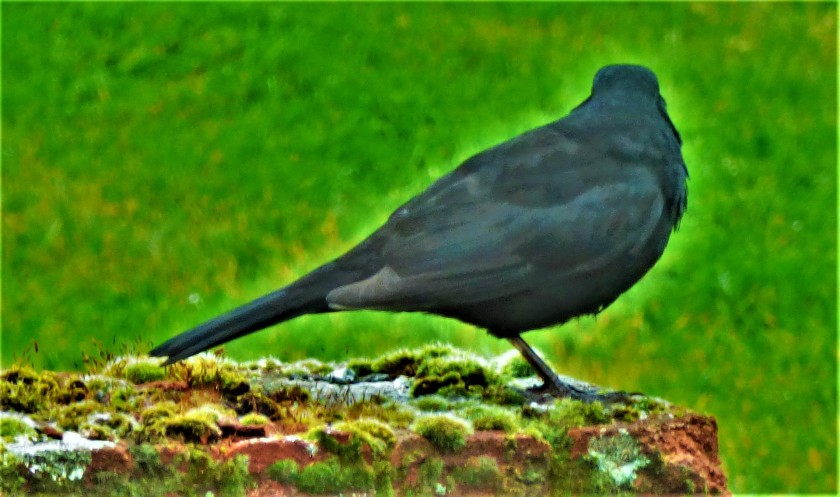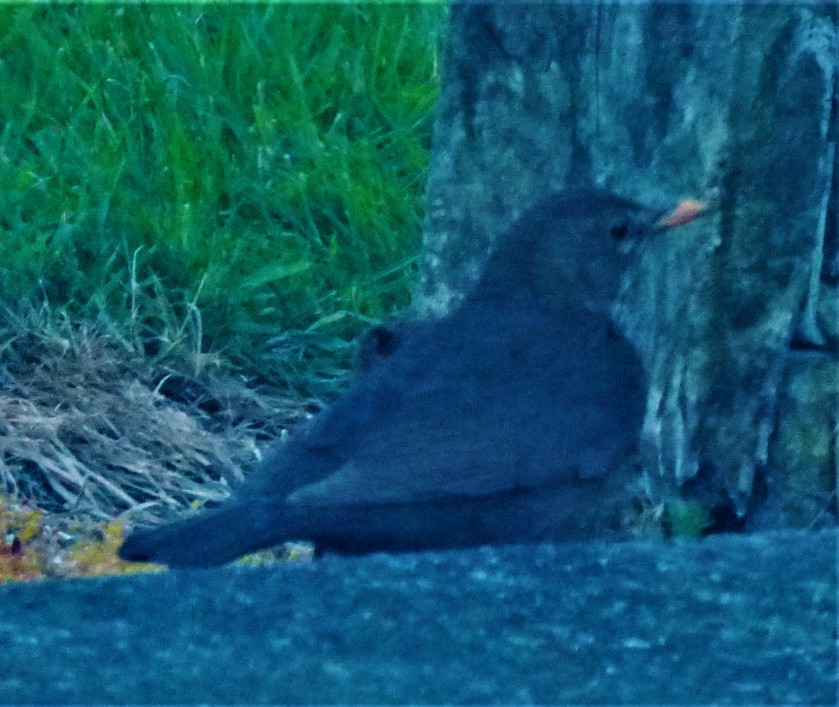INTRODUCTION
Welcome to another variation on an ‘all time XI‘ cricket theme. Today an XI noted for all round talents take on an XI largely made up of specialists (although I have allowed them one all rounder).
THE ALL ROUNDERS
- *WG Grace – right handed opening batter, right arm bowler of varying types through his career. He tallied 54,896 runs at 39.55 in first class cricket and took 2,876 first class wickets at 17.92 each. I note two things in defence of his batting average: he played on poor wickets for much of his career, and that career was very long, and went on well past his cricketing prime. In the decade of the 1870s, when he was at his zenith he averaged 49 with the bat, while no one else who played consistently over the course of that decade averaged over 25. If we accept that he would have paid for his wickets and averaged more with the bat playing on good pitches and allow 50% inflation for the effects of the change in pitches then his career figures become a batting average of 59.42 and a bowling average of 26.88.
- Wilfred Rhodes – right handed batter, left arm orthodox spinner. His career figures were 39.807 runs and 4,187 wickets, at averages of 30 and 16 respectively, but his career had several distinct periods: he started as pure bowler, batting no 10 or 11, then he moved up into the middle order for a few seasons, batting habitually at 6 or 7, and doing the double regularly (seven successive seasons), then he moved up to the top of the batting order, and on the 1911-2 Ashes tour he was England’s number two in every way – number two in the order, and second to Hobbs in the batting averages. Then, after World War 1, with Yorkshire needing more bowling he picked up his bowling arts, dropped into the middle order (no 5 initially, and moved down as years passed), and he again did the double in the first seven post war seasons. In 1926, now batting at no 8, he returned to the England team at the age of 49 for the Ashes decider at The Oval, and took 4-44 in the second innings. Then came the final stage of his career, when eyesight problems, which eventually became complete blindness late in his life, caused his batting to decline and he played as an out and out rabbit with the bat who was still worth his place as a batter. He went on the 1929-30 tour of the West Indies, playing for his country for the last time at the age of 52 years 165 days, the oldest ever to play test cricket for any country. In 1930 Hedley Verity began his Yorkshire career, and at the end of that season, at the age of 53, Rhodes retired from first class cricket to leave the stage clear for the younger man. A A Thomson wrote a two part book about the ‘Kirkheaton twins’, titled simply “Hirst and Rhodes”.
- Frank Woolley – left handed batter, left arm orthodox spinner, close fielder. 58,969 first class runs at 40.75, 2,068 wickets at 19.85 and 1,018 catches (the only player ever to achieve this treble, and indeed the only outfielder ever to take 1,000 first class catches. The 1906 Wisden said of Woolley after his debut season that “it is doubtful whether he is robust enough to enjoy a really long career.” He only lasted 32 years, up to the end of the 1937 season!
- Wally Hammond – right handed batter, right arm medium fast bowler, ace slip fielder. 50,551 first class runs at 56.10, 732 wickets at 30.58, 820 catches. He lost two seasons of his early career, one to bureaucratic malice (Lord Harris, a stickler on matters of qualification, and dedicated to Kent, noted Hammond’s Dover birthplace, and that school – Cirencester Grammar – did not technically count as residence, and caused this hiatus), and one to a mysterious illness picked up in the Caribbean, and six seasons of his later career to World War II, so his figures might have been ever more remarkable.
- Garry Sobers – left handed batter, left arm bowler of every type known to cricket, fine fielder. 28,314 first class runs at 54.87, 1,043 wickets at 27.74, 407 catches. The most complete all rounder the game has ever seen. Like Rhodes he started his career as a left arm spinner who did not really bat. Unlike Rhodes having climbed up the order he never went right back down, although he was moved down from three to six when his captain Frank Worrell noted that he and Rohan Kanhai were not combining very well and split them up.
- +Les Ames – wicket keeper, right handed batter. 37,248 runs in first class cricket at 43.51, 703 catches and 418 stumpings. The only wicket keeper ever to score 100 first class hundreds.
- Gilbert Jessop – right handed batter, right arm fast bowler, ace fielder. 26,698 first class runs at 32.63, 873 wickets at 22.79, 407 catches. A contemporary assessment of his fielding had it worth 20-30 runs per innings. He scored 53 first class innings, five of them doubles, with a best of 286, and only once in his career did he spend over three hours at the crease. For most of his career a ball had to go right out of the ground to score six, otherwise his record would have been even more extraordinary. He was once involved in a partnership of 66 to which he contributed…66 – the highest such partnership in first class cricket history.
- George Hirst – right handed batter, left arm fast medium bowler. 36,356 first class runs at 34.13, 2,742 wickets at 18.73. In each of 1904 and 1905 he achieved the 2,000 runs, 100 wickets double, only previously achieved by WG Grace, Charles Townsend and Gilbert Jessop, though matched in 1905 by the Aussie Warwick Armstrong, and then in 1906 he became the only player ever to the ‘double double’, scoring 2,385 runs and taking 208 wickets in first class matches. Every season from 1903-13 inclusive he scored at least 1,000 runs and took at least 100 wickets in first class matches. He went on to be a successful coach, first at Harrow, then for Yorkshire. He was at the Yorkshire nets when Trueman had his first bowl there, and when others were fretting over the youngster’s wildness Hirst said coolly “just imagine what he will do when he teach him to bowl straight”, correctly realizing that pace cannot be taught but accuracy can.
- Maurice Tate – right arm fast medium, right handed batter. 2,784 first class wickets at 18.16, 21,616 first class runs at 25.04. Other than Hirst’s 1906 ‘double double’ only two cricketers have ever combined a season tally of 1,000 first class runs with 200 wickets, and he is one of them. He relied on swing and cut, being the first bowler to make really devastating use of the sea fret at Hove – usually the flatness of the pitches there emasculated bowlers.
- Albert Trott – right arm slow bowler, right handed batter. 1,674 first class wickets at 21.09, 10,696 runs at 19.48. The first of only two members of this team to have averages the wrong way round. In 1899 and 1901 he combined over 200 wickets with over 1,000 runs in first class matches. However, his decline was rapid thereafter as an obsession with repeating his 1899 feat of hitting a ball over the Lord’s pavilion negatively affected his batting and his bowling lost its fizz, and somewhere along the line he completely lost the fast yorker that was such a devastating weapon in his armoury. His first misfortune occurred when after making a sensational start to his test career he was not picked for the 1896 tour of England, and made his own way to that country, ultimately signing for Middlesex. He seemed to have put the disappointment behind him by the time another Aussie side visited in 1899, but then came that shot of Monty Noble, and its subsequent effect on his batting.
- Peter Smith – leg spinner, right handed batter. 1,697 wickets at 26.55 , 10,142 runs at 17.95 in first class cricket. He achieved the season’s double for the first time in 1947, and it was in that season that he had his greatest batting moment. In the game before his big day out he had batted at no 10 and bagged a pair, so he had seemingly little cause for complaint at being made no 11 for the game against Derbyshire. The ninth Essex wicket fell at 199 and he walked out to join Frank Vigar. By the time he was out the score had risen to 417, and his share of that stand of 218 was 163, with five sixes and 23 fours, the highest first class score ever made by a no 11.
This team has an excellent top five, statistically the best batter keeper there has ever been, the ultimate x-factor player in Jessop and a fine foursome who are there principally as bowlers. Counting Sobers as three options because of his multiplicity of styles there are 12 front line bowling options in this team.
THE SPECIALISTS
- Jack Hobbs – right handed opening batter. 61,237 first class runs at 50.65. Both this tally of first class runs and his 197 centuries are first class records, and he lost four years of his cricketing prime to World War 1. His entry into first class cricket was also slightly delayed because he was a native of Cambridge and had to qualify by residence for Surrey (after someone at Chelmsford apparently binned his letter asking for a trial without having read it).
- Herbert Sutcliffe – right handed opening batter. 50,670 first class runs at 52.02. The only player to score at least 2,000 first class runs in every inter-war season. He and Jack Hobbs were statistically the most productive of all test opening partnerships, the average opening stand between them being 87.81 per wicket, including 15 century opening stands.
- *Don Bradman – right handed batter. 28,067 runs at 95.14 in first class cricket. In his 338 innings he reached 50 186 times and went on to the century on 117 of those occasions, an average of a century per 2.78 innings, a figure not remotely approached by anyone else who played enough innings to qualify for assessment. 37 times he topped 200, an all time first class record, and on six of those occasions he scored over 300, the only player have more than four such first class scores (Hammond and Ponsford joint 2nd).
- Phil Mead – left handed batter. 55,061 runs at 47.67. His Hampshire tallies of 48,809 runs and 138 centuries are both records for any single first class team. He was originally associated with Surrey, and considered to be mainly a bowler, but moved to Hampshire and ended up as one of the heaviest scoring batters of all time.
- Patsy Hendren – right handed batter. 57,611 runs at 50.80. The third leading first class run scorer of all time, and second leading centurion with 170. He did all of this while having a reputation for being a great joker and prankster, just to show that one can be a highly successful player while remembering that it should be fun.
- Keith Miller – right handed batter, right arm fast bowler. 14,183 first class runs at 48.90, 497 wickets at 22.30. Another who always realized that it should be fun. He served as an RAAF pilot in World War Two which led to his famous response to a question about pressure “There is no pressure in cricket – pressure is being in a Mosquito with two Messerschmidts up your arse.”
- +Bob Taylor – wicket keeper. He took 1,473 first class catches and executed 176 stumpings, totalling the most dismissals ever achieved by any keeper in first class cricket (two London based cricketers, John Murray and Herbert Strudwick are 2 and 3 on the list). Until he finally scored his maiden first class hundred near the end of his career he was in a club of two with Tony Lock – players who had over 10,000 first class runs, but no first class hundred (Lock’s highest score was 89 not out).
- Alec Kennedy – right arm medium fast bowler. 2,874 first class wickets at 21.23. He was seventh in the all-time list of first class wicket takers, and the only one of those seven not to be in Philippe-Henri Edmonds’ “100 Greatest Bowlers”. For many years he and Jack Newman (see yesterday’s post) carried the Hampshire bowling, until left arm spinner Stuart Boyes came along to lighten their workload a bit.
- Jack Hearne – right arm medium fast bowler. 3,061 first class wickets at 17.75 each. Number four in the list of all time wicket takers, a haul that included nine in an innings no fewer than eight separate times.
- Tich Freeman – leg spinner. 3,776 first class wickets at 18.42, taken in 550 first class games. Second on the all-time list of wicket takers behind Rhodes. Remarkably a combination of World War 1 and the strength of Kent’s bowling in his youth meant that by the time he turned 30 he had captured precisely 29 first class wickets. He took 200 or more wickets in each of eight successive seasons, including the only ever instance of 300 (304 in 1928).
- Charlie Parker – left arm orthodox spinner. 3,278 first class wickets at 19.46. The third leading wicket taker in first class cricket. Six times in first class cricket he achieved the hat trick, most remarkably in his benefit match when he hit the stumps five times in succession but the second was called no-ball.
This team has a stellar top five, a great all rounder, a great wicket keeper and four excellent and varied bowlers. The bowling with Kennedy, Hearne, Freeman and Parker with Miller as fifth option also looks highly impressive.
HONOURABLE MENTION
Every single batter to have scored over 50,000 first class runs is present in one or other of my teams, and numbers 1,2,3,4,6 and 7 of the all time leading wicket takers are also represented. No 5 in that list is Tom Goddard, the Gloucestershire off spinner who took 2,979 first class wickets at 19.84. For reasons of balance I had to select Kennedy, otherwise my only recognized pace options would have been Hearne and Miller, which is a bit too rich even for my blood.
THE CONTEST
This would be an absolute cracker of a contest. From no 3-11 inclusive the all-rounders team has a combined batting average of 280.95, while for different reasons it is hard to quantify Grace and Rhodes as openers. It would seem likely given their records when they were at their best as openers that these two would contribute sufficiently to make a team total of 400 more likely than not. The top six of the specialists team have a combined average of 344 in first class cricket, so nos 6-11 would have to come up with 50-60 between them to equalize things on this assessment. Without Bradman the specialists would have no chance whatsoever, with him it looks very even. I will call the trophy for this contest the ‘Martin – Stokes Trophy’, honouring two New Zealand born cricketers, one of the great specialists, that purest of pure bowlers Chris Martin, and a great all rounder in Ben Stokes.
AFTERWORD
For all that I would expect my side of all rounders to give a good account of themselves I most emphatically do not recommend selecting a fistful of all rounders in general. Especially I would warn of the curse of the ‘bits and pieces’ cricketer – the player who can bat a bit and bowl a bit but is not good enough at either to warrant selection. In general someone should only be picked if they merit selection as a specialist – and if they have a second string to their bow so much the better. The other problem that I did not highlight in connection with the all rounders side is that teams that bat literally all the way down often end up struggling because folk in such teams tend to develop the feeling that it is not likely to matter much if they do get out. I have memories seared in to me of England teams in the 1980s and 1990s picking bowlers who could bat a bit, and ending up neither able to score commanding totals nor to bowl the opposition out.
PHOTOGRAPHS
My usual sign off…





































































































































































































